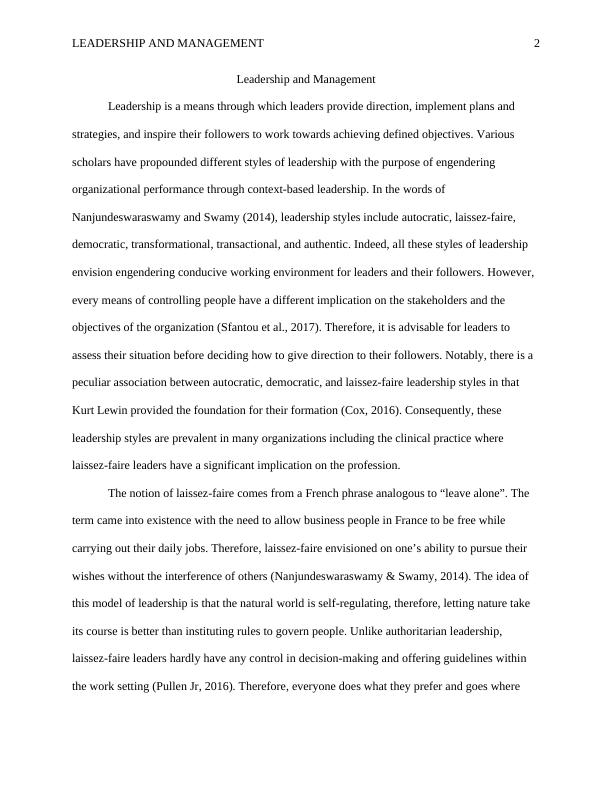Leadership and Management in Clinical Practice
5 Pages1099 Words468 Views
Added on 2023-06-04
About This Document
This article explores the different styles of leadership and their implications on clinical practice. It focuses on laissez-faire leadership and its effectiveness in transforming clinical services. It also discusses the significance of transformational leadership in nursing practice.
Leadership and Management in Clinical Practice
Added on 2023-06-04
ShareRelated Documents
End of preview
Want to access all the pages? Upload your documents or become a member.
Leadership Styles
|14
|3527
|77
Five common leadership styles, and how to find your own
|8
|2913
|20
Leadership Styles in Nursing
|11
|3173
|45
Leadership Styles Assignment Sample
|3
|435
|61
LEADERSHIP. Leadership Name of the Student Name of the
|5
|365
|288
Human RM Question Answer 2022
|4
|531
|16


